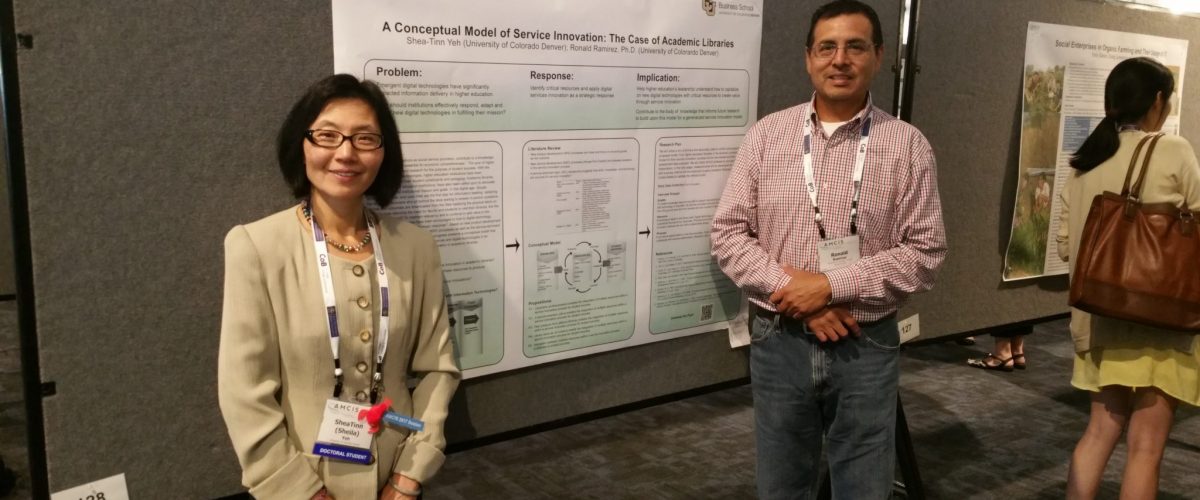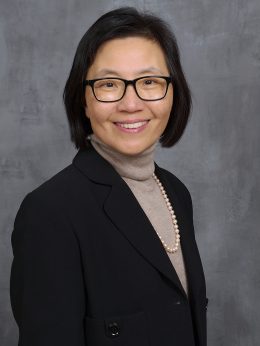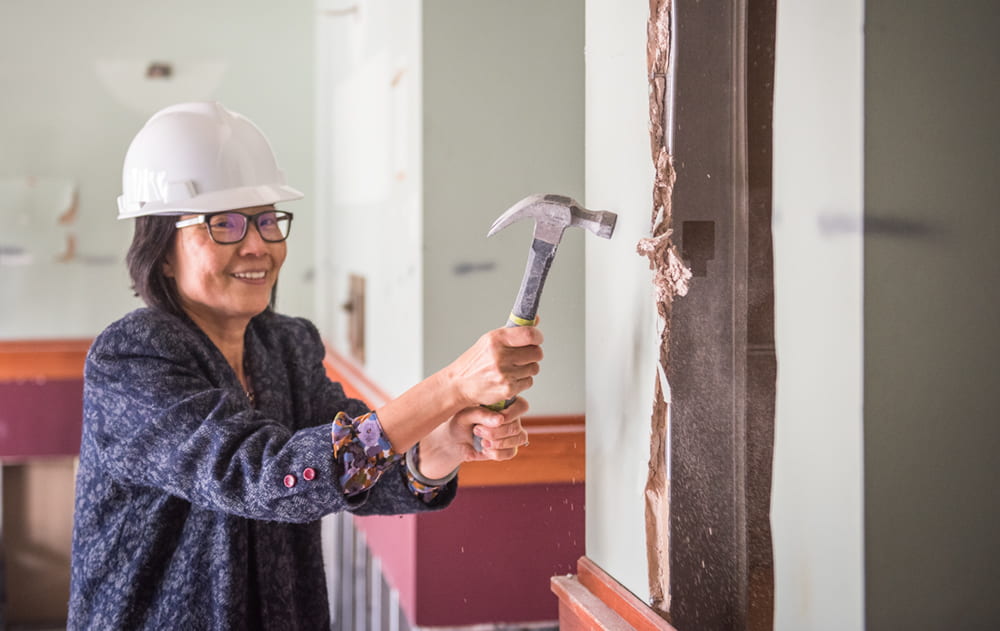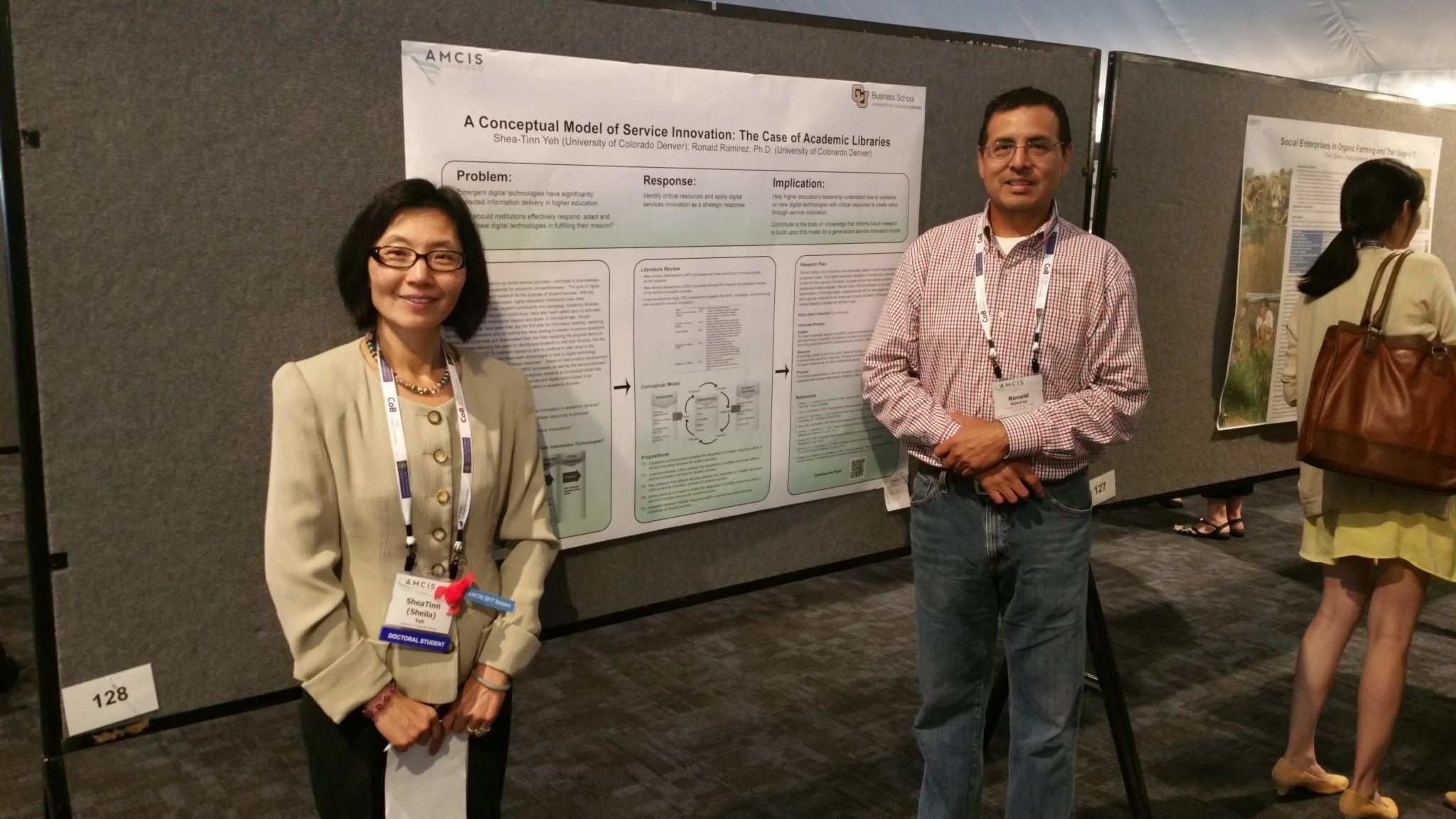
On May 22, 2018, a serious fire broke out on the roof of Hale Library at Kansas State University. While the fire was eventually extinguished, it resulted in widespread smoke and water damage throughout the building.

“This was a tragic loss to be sure, but it is also an opportunity for re-creation and maybe a re-think,” says Sheila Yeh, Associate Dean for Collections, Discovery and Information Technology Services at Kansas State University Libraries. Yeh, who earned her PhD in Computer Science and Information Systems from the Business School in 2018, would go on to help restore, renovate, and reimagine Hale Library.
What led to your decision to attend CU Denver Business School for your graduate degree?
Having served as a systems analyst and librarian in various higher education institutions, witnessing first-hand how information technology transformed organizations and society as we eased into the 21st century, I desired to learn how and why those transformations occurred. The aim and scope of CU Denver Business School’s PhD in Computer Science and Information Systems fit my research interests perfectly.
Describe your experience as a graduate student at CU Denver Business School. Favorite memories?
As a working graduate student, my experience was different from that of a full-time graduate student. Commuting to in-person classes mostly in the evenings or meeting with professors were my best memories as I felt most connected with the school, my program, and colleagues. As it happened, my son graduated high school as I received my doctorate.
What advice do you have for current students in your program (especially considering the current climate)?
The road to completing a doctorate always seems long and arduous; do not be dissuaded. There will be obstacles, be they personal or environmental, just focus on the end goal—hanging out your shingle. With that in mind, you would overcome obstacles and utilize the many resources that the Business School offers, including networking and teaching opportunities as well as industry connections. In addition, you should keep an open mind to learning from every professor’s domain expertise. Although finding your academic voice in a specific field is required for the academy, having familiarity with broad-based research and methodology is critical. Such familiarity can also be enhanced through leading information systems conferences or other interdisciplinary conferences. After all, the end goal is most rewarding.
What led you to your role with K-State? Describe your career path up to this point.
Prior to arriving at Kansas State to serve as an Associate Dean, I was the Assistant Dean for Information Technology at the University of Hawai’i at Mānoa Libraries. Prior to Mānoa, I headed the Information Technology Department at the University of Denver Libraries. Leveraging my deep familiarity with academic library operations, my dissertation research examined applying the information systems service-dominant logic theory to academic libraries as a knowledge-intensive services provider in the digital age.
In it, I examined how information technology has grown in presence in organizations including libraries, yet it is still regarded as a utility, a computational tool, and an operating expense. Isolating information technology functions may reduce organizational effectiveness by creating competition for limited resources and in the absence of an aligned strategic plan for managing information technologies. Whereas, when technologies are viewed as strategic assets and enablers, they contribute to organizational capabilities for service innovation in academic libraries. As the paradigm of information-seeking behavior among faculty and students shifts to open and electronic, academic libraries are called upon to reinstate their relevance.
Especially after the fire, this position at K-State Libraries offers a unique opportunity to reimage the library and renew its relevance. I am honored to help position K-State Libraries in service to its mission through this important restoration period and beyond.

You have have played an instrumental role in rebuilding Hale Library. What challenges have you faced during that process?
I cannot take such credit. Rebuilding Hale is a daunting endeavor. This endeavor involves PGAV Architects, all library employees, K-State Facilities, the BELFOR disaster relief organization, and construction companies. Although insurance reimburses for the fire damage and renovation, the amount is calculated to be “like to like.” A reimaging of a 550,000 sq ft building to a 21st-century library is costly. Our Dean, Lori Goetsch, and the K-State Foundation worked tirelessly to refurbish the Sunderland Foundation Innovation Lab, Butler Family Digitization Lab, and the David and Ellie Everitt Learning Commons.
After the fire, the entire library collection of 1.5 million items had to be moved out of the building, most of them were covered with soot and some were wet from the water used in the rescue effort. For soot-covered book, each one was vacuum cleaned, wiped down with a dry chemical sponge, went through an ozone chamber, and quality checked with white gloves. For those wet books, they were sent to freezer to turn water into ice to prevent mold growth. The freshly cleaned books were stored in a rented cave space at Underground Vaults & Storage in Kansas City, Kansas.
Library teams are in the process of returning cleaned collections back to the renovated Hale Library shelves. A remote staging space was established to unbox cleaned books, sort them in the right order, and transport them back to the Library. Many Library employees volunteered throughout the process with social distancing and mask requirements during this pandemic which damped progress but not the spirit.

Are there any moments or learnings from your PhD program you can recall which have had a direct impact on the planning of Hale?
I would say that learnings have had impact on my job in general more than the planning of Hale, because I have been able to practice what I learned every day. For example, with budgetary constraints, libraries have to realign responsibilities by retooling existing employees according to value propositions. This practice was documented in the paper by Professor Zhiping Walter and me with the theory developed by Professor Jahangir Karimi. In addition, I advocated service innovation as a strategic imperative and combined digital technologies, critical library resources, and users’ feedback in an iterative process, as documented in the paper by Professor Ronald Ramirez and me. In other words, the impact from the PhD program is broader and sustainable than a targeted project.
How has the COVID-19 pandemic affected you? Any silver linings you’ve experienced?
The Hale Library had been undergoing renovation for more than 21 months when the stay-at-home order was issued in March 2020. It seemed that the Library had suffered a double setback. For the Library’s administration, the first order of business was to ensure the continuity of operations and the second order was to ensure communications with and the well-being of library employees. For both these tasks, digital technologies play a more significant role than at any time before. For example, the Library’s instruction sessions have to be delivered online, research materials can only be accessed in their digital form, and Slack, Team Drive, or Zoom became the new collaboration tools, all within two weeks of the lock-down mandate.
To me, the silver lining is to witness how technology can be adopted at such a pace, to such a wide extent, and by users who previously reluctant to adopt those tools. Here we are, almost a year into the pandemic, most library employees choose technology over an in-person option when given the choice.
What piece of advice (personal or professional) has helped you the most in life?
When faced with hardships, I strive to follow the four dictates from a Chinese Buddhist monk, Sheng-Yen: “Face it, accept it, deal with it, then let it go.”


